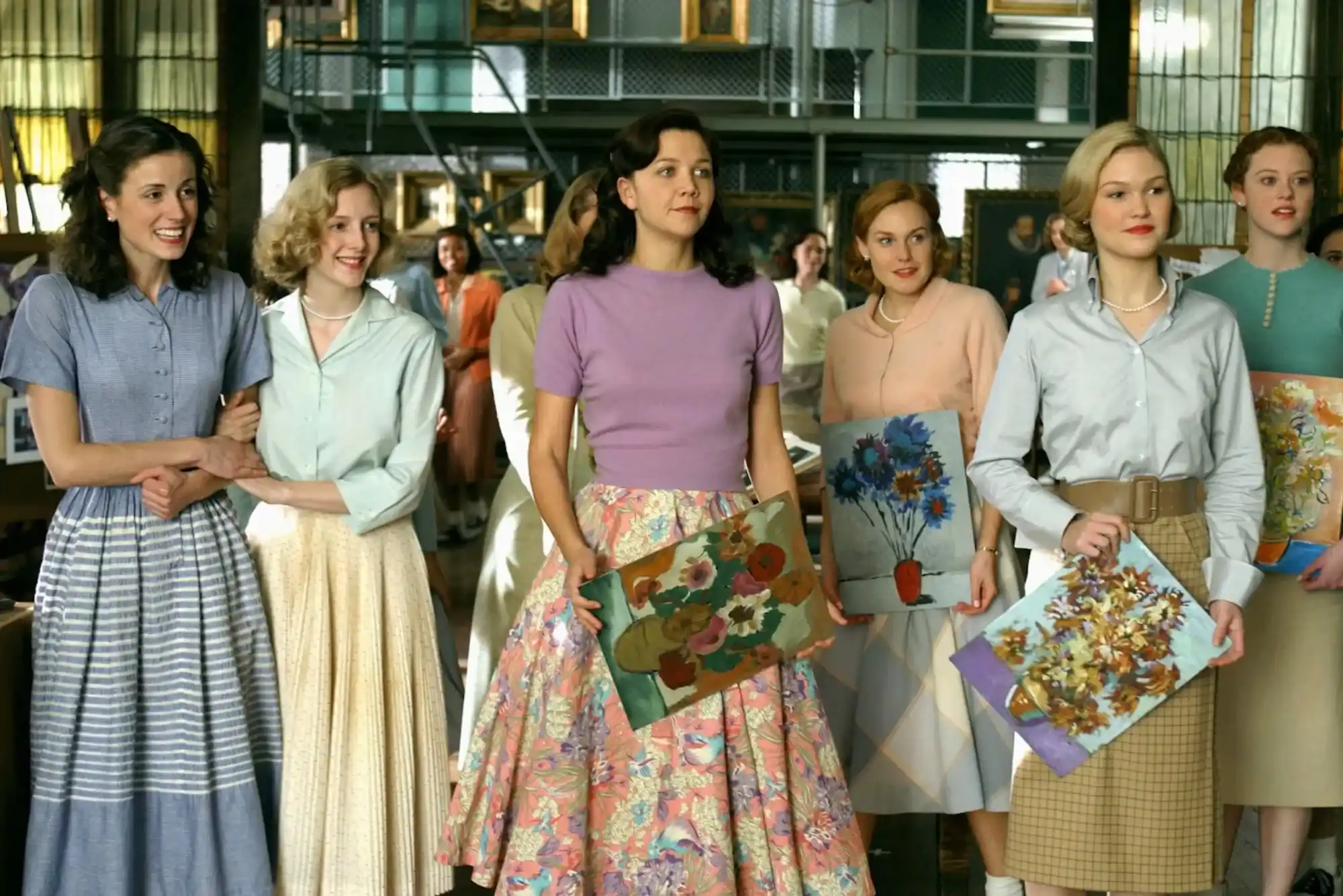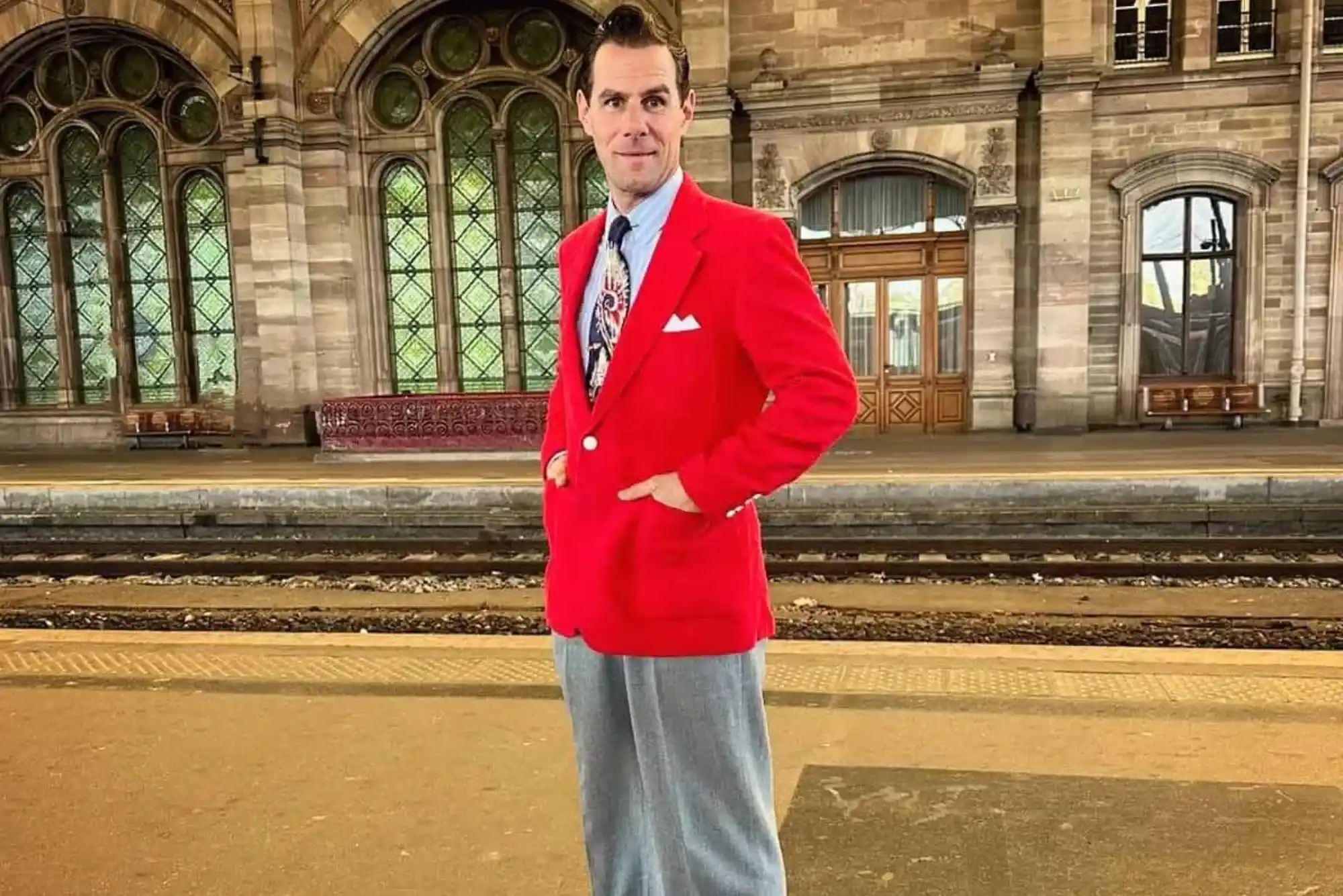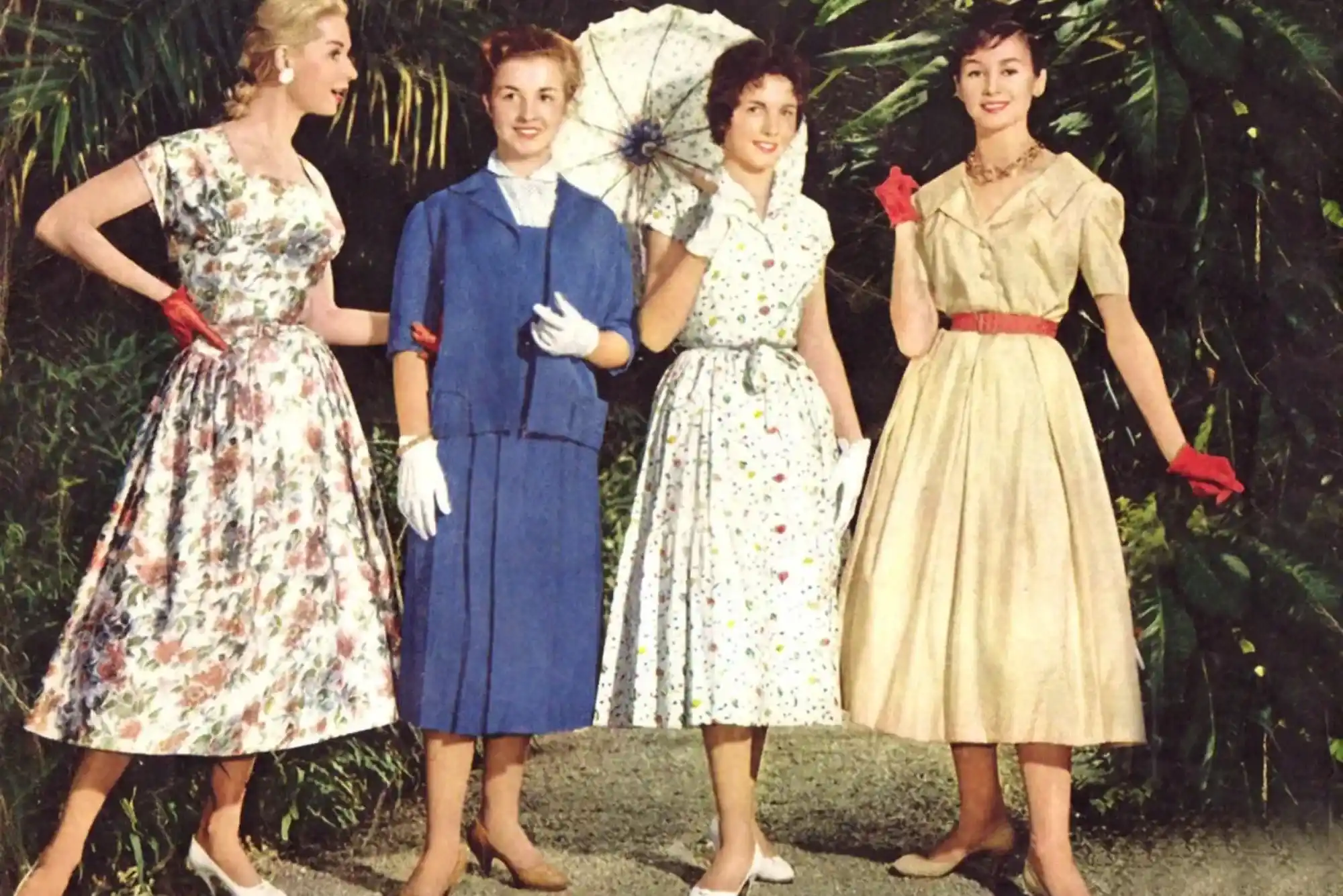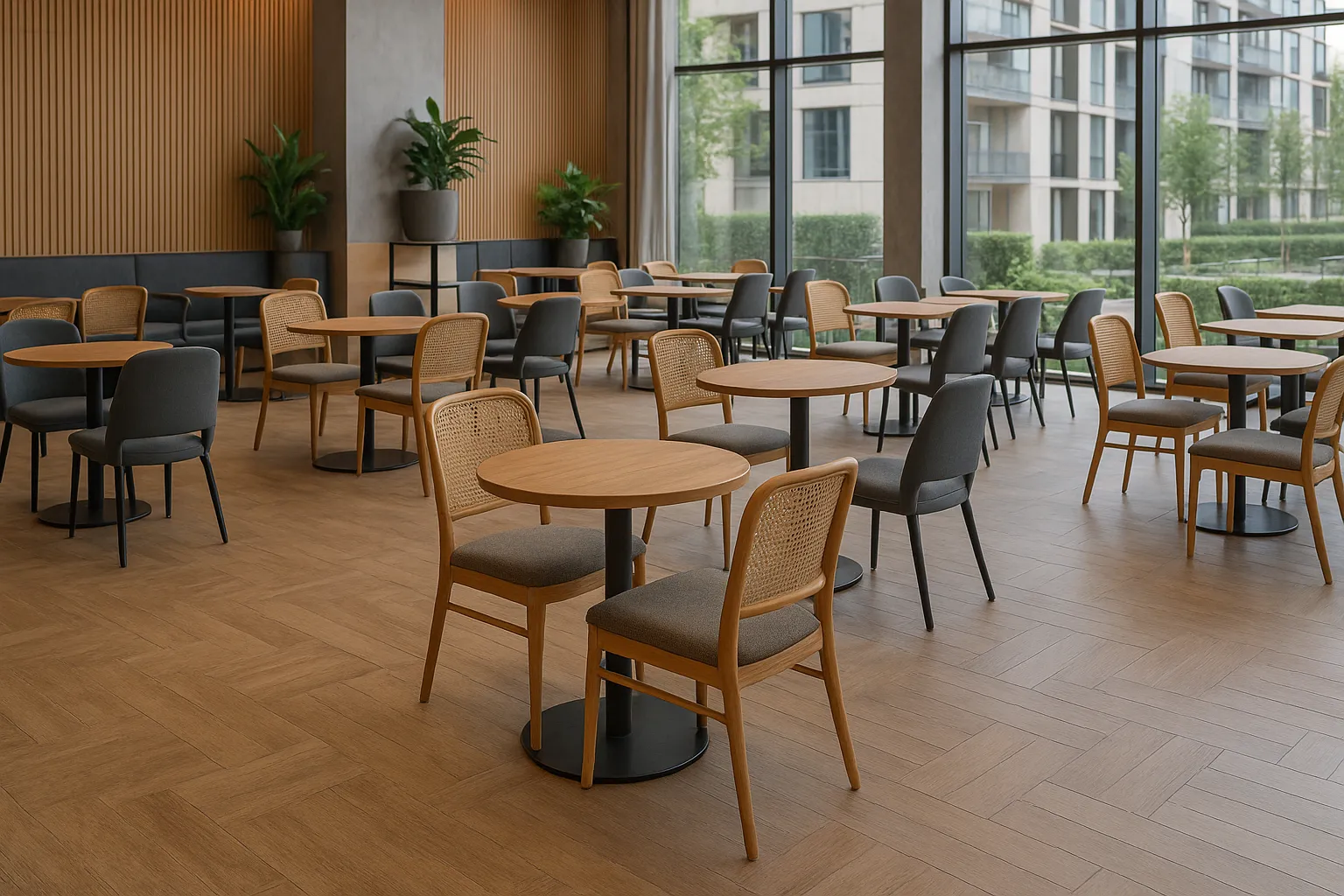The 1950s marked a significant era in fashion history, characterized by elegance, femininity, and a distinct return to traditional gender roles post-World War II. This decade witnessed the rise of iconic designers, timeless silhouettes, and vibrant trends that continue to influence contemporary fashion.
Women’s Fashion
Silhouettes and Styles
In the 1950s, women’s fashion embraced the hourglass silhouette, emphasizing a cinched waist and full skirts. This shape highlighted a feminine figure and became a defining feature of the decade’s style. Alongside these fuller skirts, slim pencil skirts and fitted sheath dresses offered a sleek and sophisticated alternative, perfect for both day and evening wear.
Iconic Garments
One of the most influential fashion moments of the 50s was the introduction of the New Look by Christian Dior in 1947. This collection, characterized by its nipped waist and voluminous skirt, continued to dominate fashion trends throughout the 50s.
Poodle skirts, often decorated with whimsical appliqués such as poodles, became a playful and popular item among younger women. Additionally, sweater sets and twin sets became wardrobe staples, often paired with pearls for a polished look.
Fabrics and Patterns
Common fabrics in the 50s included cotton and wool, which were practical yet stylish. Bold patterns like polka dots, plaids, and florals were prevalent, adding a playful and vibrant touch to women’s clothing.
Men’s Fashion
Men’s fashion in the 50s was characterized by tailored suits that featured narrower shoulders and tapered trousers, creating a more fitted and refined silhouette. Casual wear also saw a rise in popularity, with men opting for more relaxed outfits such as Hawaiian shirts and chinos.
Iconic Garments
The flannel suit was essential for business and formal occasions, reflecting the era’s emphasis on neatness and sophistication. Leather jackets, popularized by cultural icons like James Dean, represented the rebellious youth and became a staple for the younger generation. Bowling shirts, often featuring bold patterns and contrasting colors, were a casual staple for men during this decade.
Fabrics and Patterns
Wool and flannel dominated men’s suiting, providing both durability and style. Common patterns included checks and stripes, which added visual interest and a touch of personality to men’s attire.
Accessories and Footwear
Women’s Accessories
Accessories played a crucial role in completing the 50s woman’s look. Gloves and hats were essential for a polished appearance, with gloves available in various lengths and hats ranging from small pillbox styles to wide-brimmed designs. Pearls remained a timeless choice, while costume jewelry allowed for more playful and affordable accessorizing.
Men’s Accessories
Men’s Accessories are essential items that complement and enhance a man’s outfit. They include a wide range of stylish and functional items like watches, belts, wallets, cufflinks, ties, and sunglasses. Accessories add personality to a man’s look, elevating both casual and formal attire.
For example, a classic wristwatch adds sophistication, while a leather belt ties an outfit together. Sunglasses not only protect the eyes but also add a cool, polished touch. Men’s accessories are key in making a fashion statement while ensuring practicality.
For men, ties and bow ties were popular, often in bold patterns that added a touch of flair to their outfits. Fedoras and trilby hats were essential headwear, completing the dapper look of the era.
Footwear
Stiletto heels became a symbol of elegance for women, adding height and sophistication to their outfits. For men, classic loafers and lace-up oxfords were standard, versatile choices that complemented both formal and casual attire.
Influential Designers and Icons
Designers
Christian Dior revolutionized women’s fashion with his New Look, creating a lasting impact that defined the 50s silhouette. Coco Chanel continued to influence the fashion world with timeless pieces like the Chanel suit and the little black dress, epitomizing elegance and simplicity.
Icons
Audrey Hepburn’s sophisticated style in films like “Sabrina” and “Roman Holiday” made her a fashion icon of the 50s. Her chic, minimalist wardrobe choices set trends that were emulated by women worldwide. James Dean embodied the rebellious spirit of the youth, influencing casual men’s fashion with his iconic look, including leather jackets and denim.
Pop Culture and Fashion
Hollywood had a significant influence on 50s fashion, with stars like Marilyn Monroe and Grace Kelly setting trends that women sought to emulate. The rise of rock ‘n’ roll music and musicians like Elvis Presley also impacted youth fashion, promoting styles such as leather jackets and denim.
Social and Economic Context
The post-war prosperity of the 1950s led to increased consumerism and mass production, making fashion more accessible to a wider audience. The growth of suburban life also influenced clothing styles, with a shift towards more relaxed and practical outfits suitable for everyday wear.
The 1950s was a decade of distinctive, memorable fashion that balanced traditional elegance with burgeoning modernity. The era’s styles continue to inspire contemporary designers and remain a beloved chapter in the history of fashion. Whether through the timeless glamour of Dior’s New Look or the rebellious charm of James Dean, the legacy of 50s fashion endures.










